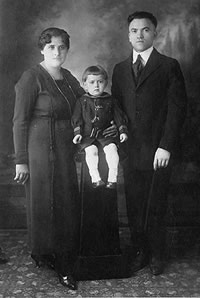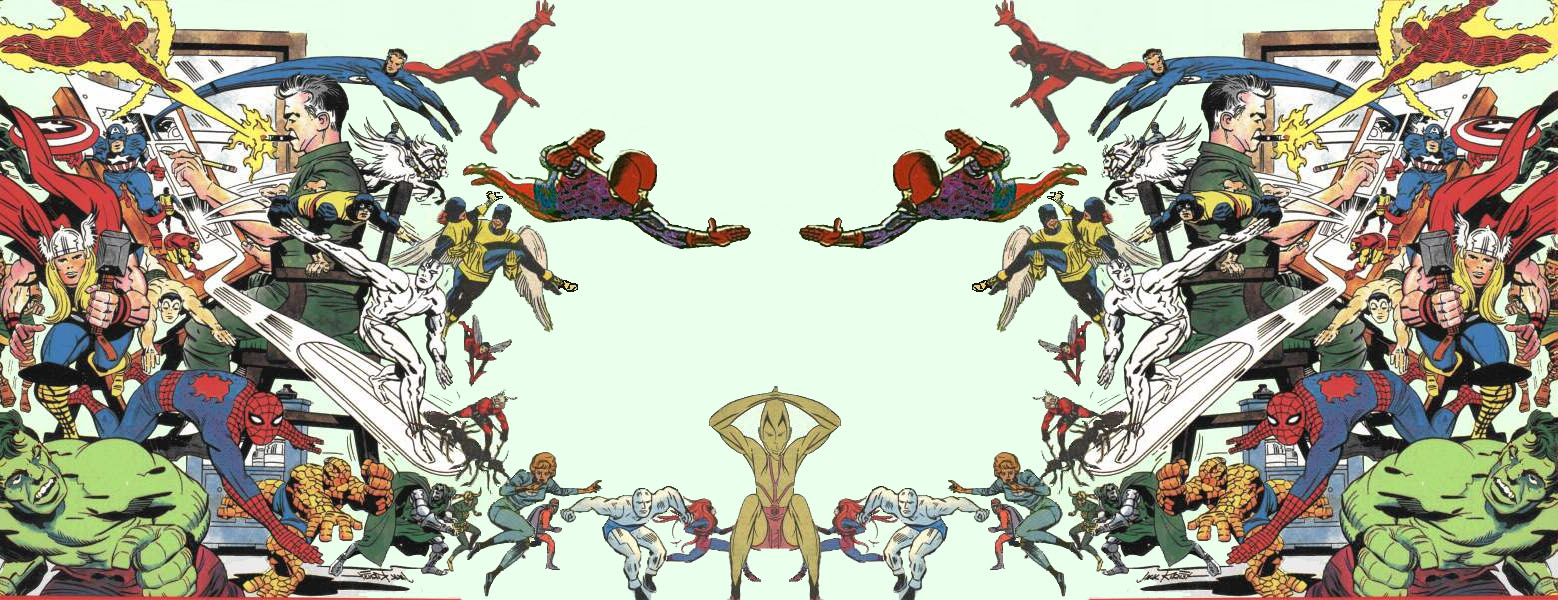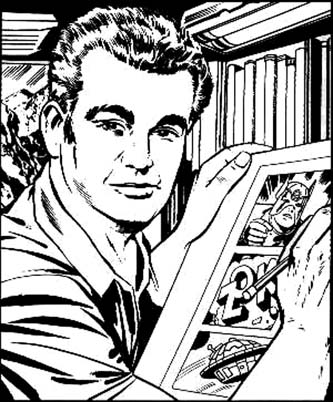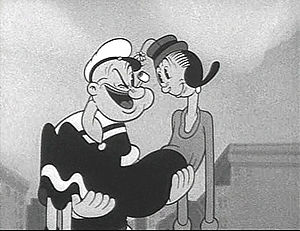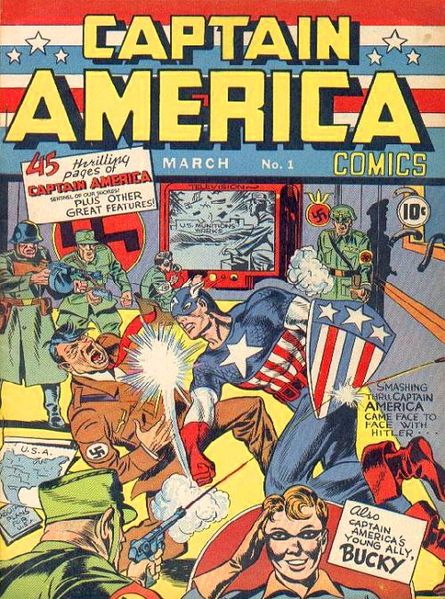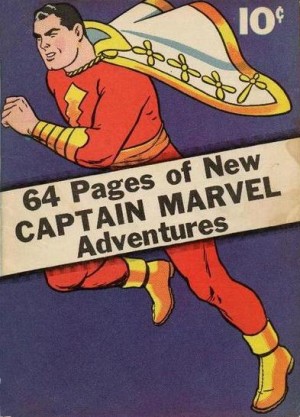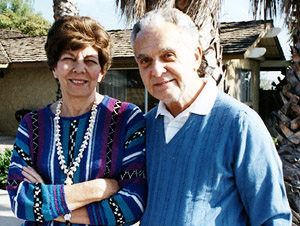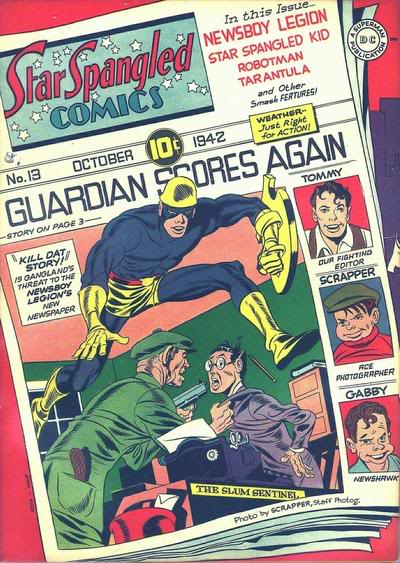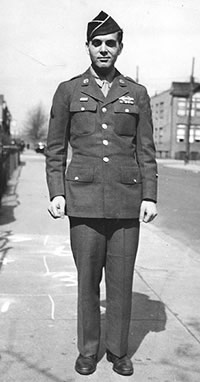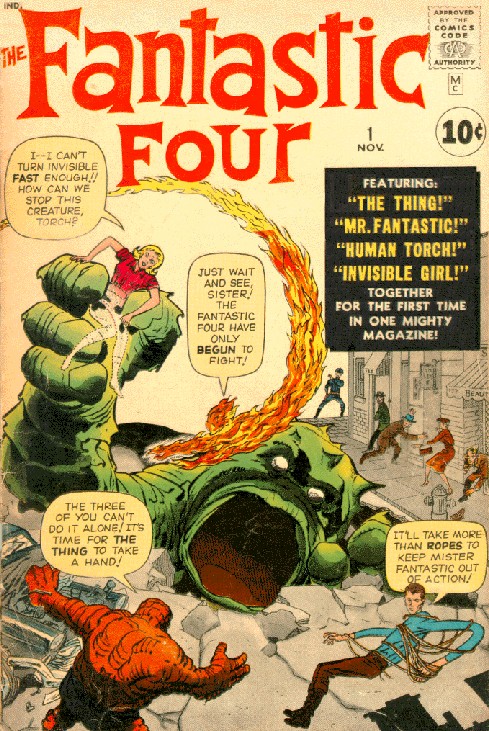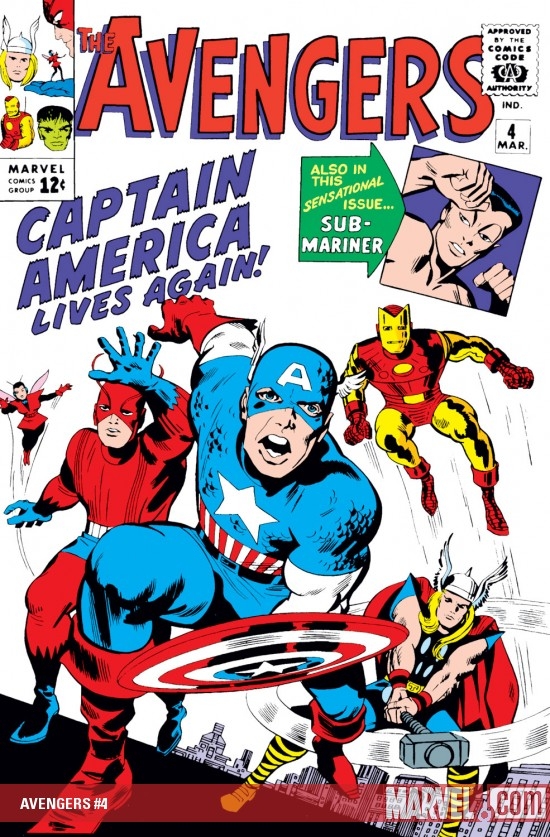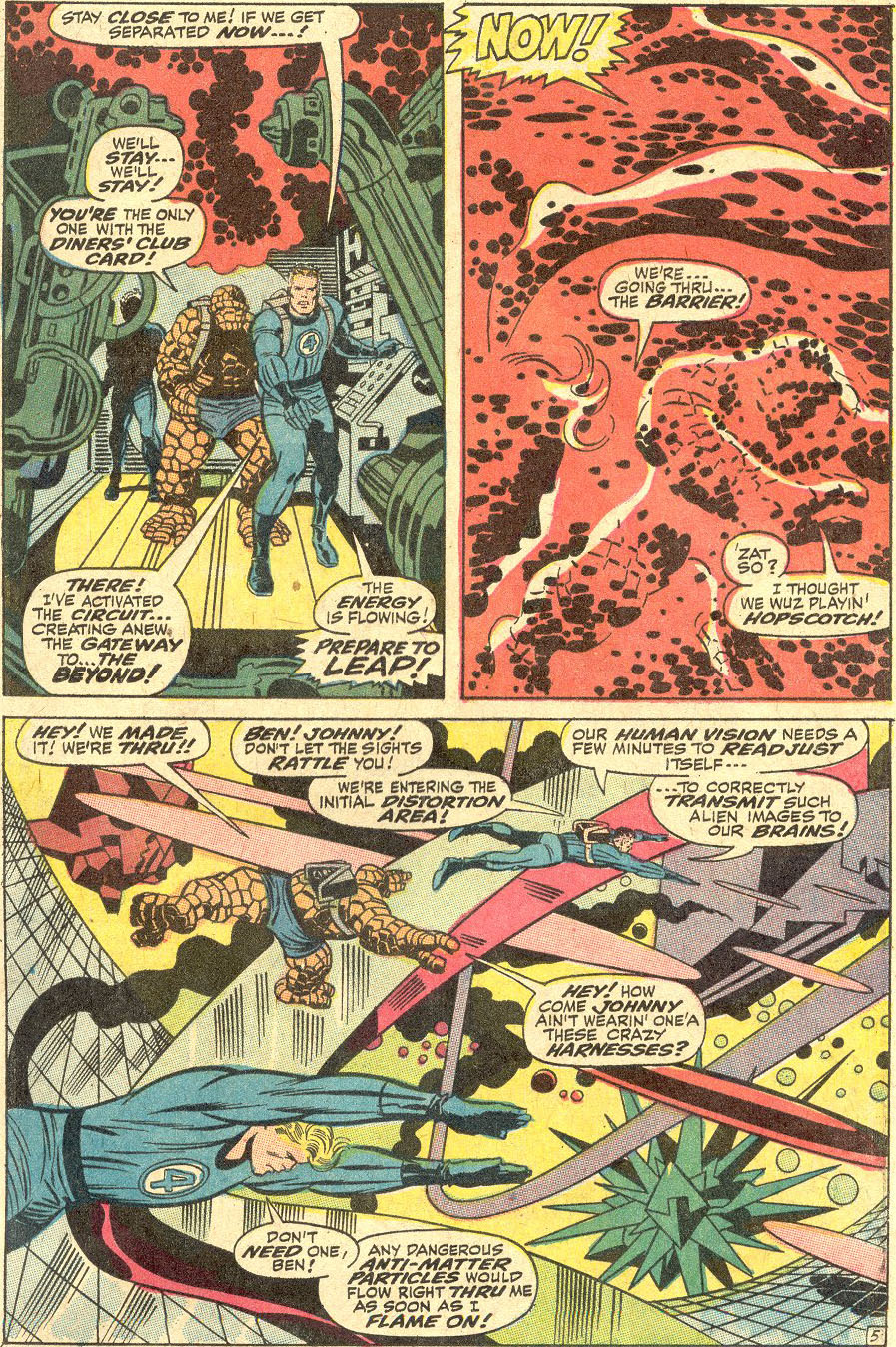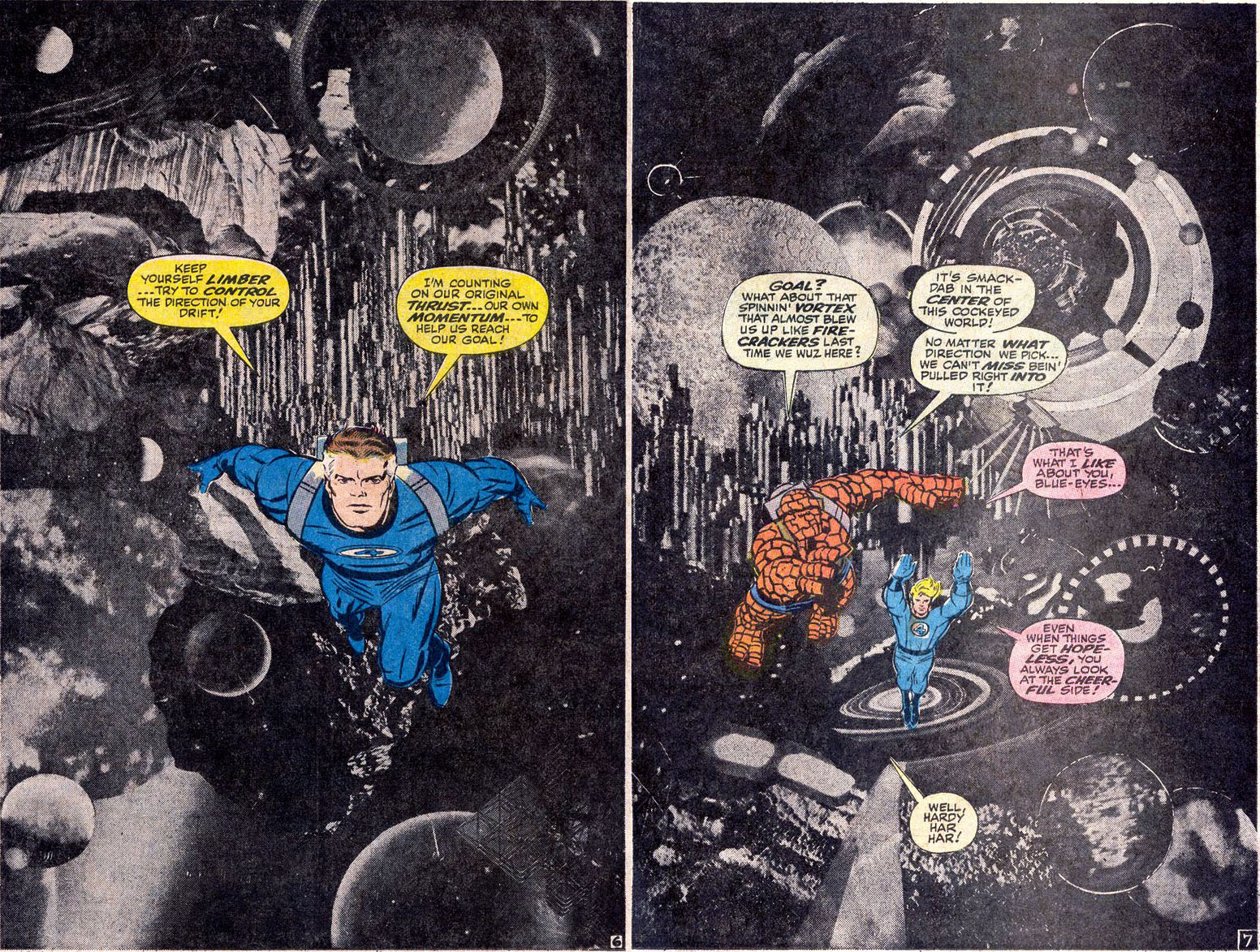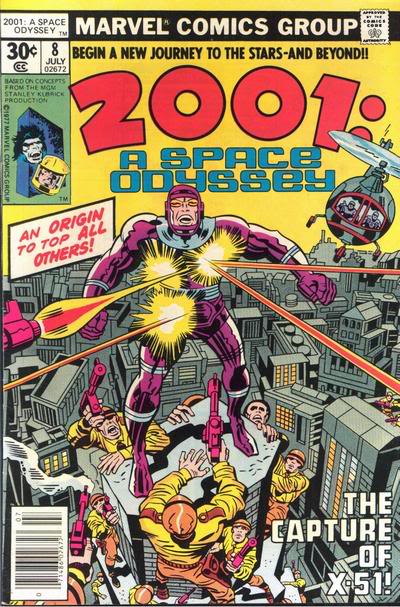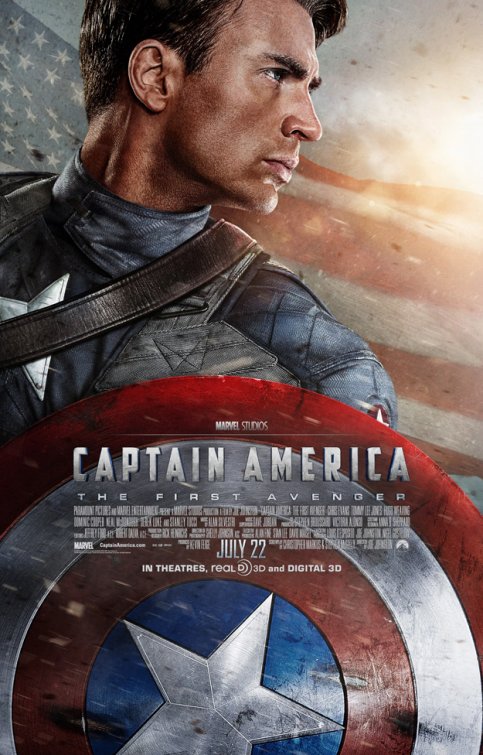
|
The Seventh Annual Dead Man of the Year Award...
By J.C. Maçek III 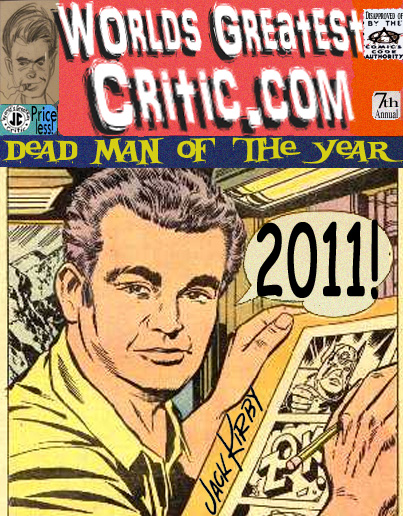
Hail to the "King", baby!
The 2011 Dead Man goes to The Amazing, The Fantastic, The Uncanny, The Mighty, The Invincible... In the six previous years that we've offered The Dead Man of the Year award here at WorldsGreatestCritic.com we have honored Special Effects geniuses like Willis H. O'Brien and Stan Winston, Actresses like Majel Barrett, comedians like Phil Hartman and Leslie Nielsen and, of course, Comic Book creators like Jerry Siegel and Joe Shuster! And now, the DMOTYs add one more such name to the list. One more legendary, influential and impactful to the award-year artist. And this year, "Artist" is, most assuredly, the Key Word. Looking at the 2011 Year in Entertainment one name popped up over and over and over again, showing his incredible mark on multiple media... one Jack "King" Kirby! For those of you readers who aren't completely familiar with comic books and, thus, the name of Jack Kirby, you bet your star-spangled shields that you're familiar with his work. That is, of course, if you've heard of the likes of Captain America, The X-Men, Iron Man, Thor, The Hulk, The Fantastic Four, The Avengers and... well, the list goes on and on and on... Yeah, Jack Kirby created or co-created all of those... and many more, spanning multiple companies and collaborations with some of the biggest names in all of Comicdom. But the story of one of popular art's most distinctive, influential and recognizeble creators goes way back to more humble beginnings. The man who would one day be "the King" was born Jacob Kurtzberg in the Lower East Side of New York back on August 28, 1917. His conservative Jewish parents immigrated to the United States from Austria and his father supported the family working in a garment factory. Young Jacob's life on Suffolk Street wasn't always easy! With the neighborhood peppered by youth gangs, Battlin' Jack became something of a young street fighter to remain intact on his walks to and from Hebrew School. It was during these rough and tumble times that Kurtzberg the younger became something of an escapist. He passed many a "wasted" day at the Movies and became fascinated with the stories told there. His work at Manhattan's P.S. 20 Elementary School as well as Hebrew School was often decorated with Doodles in the margin. These doodles started appearing on every scrap of paper that passed through his hands. It was also around this time that Jacob Kurtzberg discovered his first art teacher... not in the form of a hands-on instructor, but in the form of Comics! It was Alex Raymond's elaborately drawn Flash Gordon strip that proved to be an early obsession and influence on Kurtzberg. Other teachers came in the form of Milt Caniff's Terry and the Pirates and Steve Canyon strips, Hal Foster's iconic work on Prince Valiant and even political and editorial cartoons from the likes of Ding Darling, C.H. Sikes and, of course, Rollin Kirby! Kurtzberg's self-taught artistry didn't quite copy the styles and content of his influences. Instead, Kurtzberg took these techniques and created his own styles. One can look upon, for example, the Silver Age Sci-Fi artwork of Jack Kirby with its intricate speculative fiction technology, amazingly ambitious lines and constructions and fantastical yet impressive and enviable costumes and see undeniable hints of, for example, Flash Gordon, but never do these creations look like anything but emerging motifs from the "Kirbyverse"! Looking to hone his (already impressive) skills as an illustrator, Kurtzberg enrolled in the Pratt Institute, the famed private art college in Brooklyn, New York. Reports differ as to how long Jacob Kurtzberg stayed at Pratt and just why he left, however, it is known that he dropped out of the school in a matter of days. Family finances as well as Jacob's too-fast style both are said to have been contributing factors in his leaving the school. Thus far the closest young Jacob came to a professional job (he was still a teenager after all) was cartooning for The Boys Brotherhood Republic Newspaper, something of a newsletter for a youth-gang controlled area of town. Rejection slips came from all over every part of town, from The New Yorker all the way down to the smaller rags out there. At the age of 19 Kurtzberg found work at the Lincoln Newspaper Syndicate where he worked as a professional cartoonist for the first time. He worked on single-frame advice cartoons as well as actual newspaper comic strips. It was here that Kurtzberg took on his first ever pen name: "Jack Curtiss"! At Lincoln, our subject's work was as prolific as it was experimental. He worked with traditional, funny cartooning, more serious and realistic (yet never striving for "photographic" renderings) and even the look of woodcut art. Kirby also worked on science fiction and seafaring scripts during his tenure at Lincoln. This was only two years after the publishing of Famous Funnies, considered to be the first ever real American Comic Book! Until then, the closest thing had been newspaper inserts and digests of newspaper strips. Famous Funnies: A Carnival of Comics was 36 pages of reprinted comics made specifically for the News stand (which carried a July 1934 cover date). Only one year before Kirby's entry into the Newspaper business came Malcolm Wheeler-Nicholson's New Fun: The BIG Comic Magazine, the first ever comic book to feature all-original content, the first to support itself with advertising and the first to measure 10 x 15 inches. The Medium that would make Jack Kirby a star was born... however, the man who would become Jack Kirby wasn't a part of it yet. Jacob Kurtzberg's Comic "In" might have been lost when Lincoln went out of business in 1938, the same year that Superman, the first-ever Superhero was published by the very company Wheeler-Nicholson had launched. Luckily, our young cartoonist's skill was impressive enough to land him work with Fleischer Studios (the animation company who would eventually produce some incredible Superman cartoons). Jacob worked as an "in-betweener" artist, filling in the action between major movement frames on Fleischer's very famous (and still lauded) Popeye cartoons (themselves adaptations of a famed comic strip). Jacob's tenure at Fleischer proved to be short-lived, as he felt that his work there was more akin to the factory work his father had done than to the creative work he longed for. Until this time, Jacob and the Comic Book Industry grew, side-by-side, yet never quite crossed over to each other. Or that would have been the case if he hadn't gotten a freelance job around this same time working with another titanic name in the comics industry. The firm of Eisner & Iger was started by cartoonist and publisher Jerry Iger along with no less a legendary comics creator than Will Eisner (as in... "The Eisner Award", comicdom's answer to The Oscar)! Eisner & Iger was one of the few, at that time, firms that produced original creations for the comic book market and that original slate soon included Kurtzberg's work. Although "Jack Curtiss" and other pseudonyms of Kurtzberg's did grace these pages, it's said that the name "Jack Kirby" was first used around this time. Here, "The King" (to be) worked as both a writer and artist on science fiction stories, adaptations of classics like The Count of Monte Cristo and even Westerns. Eisner & Iger continued to publish Kirby's art even after he had left the company. It was at Victor Fox's Fox Feature Syndicate (where he became one of the higher-paid staff at a wage of fifteen dollars a week) that he first worked professionally on a Super Hero title! Kirby's run on the strip featuring The Blue Beetle was published in newspapers (and credited to the pseudonym "Charles Nicholas") while much of his other work stayed in Fox's comic book offerings. At Fox, Kirby was able to work with other notable artists and writers in the industry including Submariner's creator Bill Everett and, of course... the great Joe Simon! Joe Simon was a writer, artist and editor at Fox who immediately took a liking to both Jack Kirby's artwork and Jack Kirby himself. A friendship and decades long collaboration started right there in 1940 and so was born the now-legendary alliance of Simon & Kirby! 1940 proved to be an eventful career for Jack Kirby (by any name). That summer, the Kurtzberg family moved to Brooklyn where Jack met Rosilind Goldstien, with whom he formed a beautiful romance. It was the year of Kirby's first paid Superhero work (in the aforementioned Blue Beetle strip), the year he met and formed that prolific alliance with Joe Simon... and the year that Simon and Kirby made history for the first time! Moving to a company called Timely Comics, Simon and Kirby collaborated on a new, patriotic hero who carried a star-spangled shield and fought injustice to preserve the true American Dream! That character's name... was Captain America! At only 23 years old, Jack Kirby had co-created one of the most recognizable and iconic popular characters of all time. The character's first appearance featured Captain America punching Hitler on the jaw, years before the United States actually entered World War II! One can only imagine the joy a Jewish artist in his early 20s must have felt drawing his own All-American creation laying "der Fuhrer" out with one punch! When the first issue of Captain America Comics shipped (with a March 1941 cover date) it became an immediate success, selling over a million copies and demanding multiple print runs. This fantastic success validated Joe Simon's deal with publisher Martin Goodman to grant Simon & Kirby a percentage of the profits and staff positions at Timely (Simon as Editor and Kirby as Art Director). Incidentally, it was at about this time that a young aspiring writer named Stanley Lieber, an assistant at Timely, was given his first shot at writing. This "text filler" called "Captain America foils the Traitor's Revenge" appeared in May 1941's Captain America Comics #3 under the pen name Lieber would use for most of his career: Stan Lee! (More on him later.) Simon & Kirby's 1941 proved to be as much of a boom as their 1940. Before their staff jobs at Timely became official, they were hired to moonlight over at Fawcett Comics on the first full issue to feature what would become Fawcett's flagship character (and one of the most famous comic characters of all time). The comic was Captain Marvel Adventures #1, written by Joe Simon with art by Jack Kirby! Although the famous cover art was drawn by Captain Marvel creator C.C. Beck all FOUR (!) stories in the 64 page volume were drawn by Kirby and written by Simon, with some of the first Captain Marvel (and Billy Batson) traits first codified by this famous team! Within a very short time after the release of this comic book, Captain Marvel became one of the most popular comic book characters of his day, regularly outselling even Superman (and ultimatly prompting a successful lawsuit from DC). Captain America and Captain Marvel brought to life in the same year by the same team? They could have retired then and still been famous. But this was only the beginning! With these first big steps, Simon and Kirby's names almost immediately became synonymous with great superhero comics, spanning more than one company! Their lucrative contract with Timely led to their becoming two of the first sought-after superstars of comics. They had already created a great slate of characters that, to this day, remain popular at the company Timely became (a little outfit called "Marvel Comics"), such as The Vision, Captain America's partner Bucky and The Young Allies With an impact most Meteors would envy at Timely, they began entertaining other offers. When a financial dispute with Goodman came to a head, Simon and Kirby took an impossible-to-refuse offer from a Distinguished Competitor and defected after 10 issues of Captain America! At National Periodical Publications (which was already starting to use the name it is now most famous for: DC Comics) they were treated as headliners with their bylines commonly appearing in larger print than the names of the comics themselves in advertisements. Their migration to DC also gained them an incredible 300% raise in comparison to what Timely was paying them and a workshop to call their own. In accordance with their new statuses (and combined salaries of $500.00 per week) they were also expected to produce large amounts of great work... which they did, creating the second major version of DC's The Sandman, as well as Manhunter, The Boy Commandos and The Newsboy Legion! That latter "kid gang" was quickly paired up with a new creation of Simon & Kirby's known as The Guardian, a blue costumed, helmeted, masked and shield-wielding superhero who bore more than a little resemblance to Simon & Kirby's most famous creation Captain America. The name of the comic book he starred in: Star Spangled Comics! Take THAT, Marvel! Kirby and Simon's work wasn't limited to their own creations either. Their clout allowed them access to all of DC's expanding pantheon and an unprecedented editorial leeway. Jack Liebowitz at DC told the pair to "do what you want", which they did incredibly well. They Penciled, Edited, Inked, Lettered and Wrote their own work. DC was buying scripts from other established writers for Simon & Kirby to work on. However, more often than not, (according to The Jack Kirby Museum) the duo literally threw the scripts out the window (or, occasionally, made paper airplanes out of them) and wrote their own scripts! At the highlight of his success during this run at DC, the kid once known as Jacob Kurtzberg married Roz Goldstein on May 23, 1942 and legally changed his name to Jack Kirby, his now most-famous pseudonym. Kirby liked the sound of the name and the fame it had afforded him, but as a proud Jew, he was offended by those who suggested he had changed the name to hide his heritage. During this same time, with World War II looming, Simon & Kirby created an inventory of characters for DC with the expectation that these would be written and drawn by other artists. In preparation, the pair even hired their own writers and artists to carry on their great stories. Indeed, Jack Kirby, who had (to date) created the most famous patriotic hero (the one who punched out Hitler) and several other patriotic fighting teams was drafted into the United States Army in June of 1943 while Joe Simon voluntarily enlisted in the United States Coast Guard. In the War, Kirby landed at Omaha Beach at Normandy (after D-Day) and became an advance scout for Company F in the 11th Infantry, 5th Division of General George S. Patton's famed Third Army. Thanks to his successes as a comics artist, he was asked to use his artistic skills in his scouting work, drawing detailed reconnaissance maps of the towns he surveyed! Kirby fought as an infantryman in the campaign at Metz and became a decorated war hero. All the while he wrote a letter every day to his beloved wife Roz Kirby. A severe case of frostbite almost caused Kirby to lose his legs but he thankfully recovered before this could happen. He spent his last six months of service in the Army's motor pool in North Carolina where he was honorably discharged as a decorated Private First Class, having earned a Combat Infantryman Badge as well as a European/African/Middle Eastern Theater ribbon with a bronze battle star. In 1945 he returned home to his wife Rosalind and his partner Joe as well as the career he loved in Comics. While the end of 1945 brought Jack and Roz the joys of a new daughter named Susan, joys at work were a different story. During their time away from "the old drawing board" the world of Comics had changed and getting back to it proved to be a dramatic shift. Joe and Jack took a job at the Harvey Comics Company in 1945, followed by Hillman Publications and Crestwood Publications. While still recognizable names in the industry, their superstar status was hard to recapture and superhero comics in general were on the decline thanks to cold-war paranoia and the writings of uninformed psychiatrists (like Fredric Wertham). Although a few science fiction, horror and western comics were added to their resume in the postwar years, Simon & Kirby's biggest successes of the era came in the surprising form of Romance comics. Simon & Kirby's Young Romance #1 sold a staggering amount of copies and proved (for at least the short term) to be as imitated as their Captain America work had been in the Golden Age! This strange limbo between the Golden and Silver ages of Comics was a time of experimentation for the industry, unsure of where the publisher's bread and butter might come from. As censorship and The Comics Code Authority all but killed Horror and Crime comics, other genres were tried out... including, for a brief run, Captain America. Bitter over the move of Atlas Comics (Timely's pre-Marvelous successor) to bring back Simon and Kirby's most famous character, the duo countered by creating another All-American Patriotic hero called The Fighting American, who debuted in 1954 in Crestwood's Prize Comics' imprint's Fighting American #1. With his star-spangled uniform, super powers and kid sidekick ("Speedboy" instead of "Bucky") the original intent was to show Marvel how Captain America should be done. Alas, the changes of the 1950s were many and neither comic survived for long. With the backlash against McCarthyism in full swing, a real, anti-Communist, Patriotic Hero was hard to warm up to. Thus, Simon & Kirby went all out and turned the comic into a satire of the jingoistic attitudes that fueled the McCarthy Era. Either the public didn't get it, it was too late or Superhero Comics still were far from regaining popularity because The Fighting American failed to sell and was cancelled. In truth, however, most super hero comics that didn't feature either Batman or Superman were forced off of the racks due to low sales and even those two saw a steady reduction in popularity... for the time being, at least. Hoping to both beat 'em AND join 'em, Simon & Kirby started their own comic book company called Mainline Publications. With partnerships with Crestwood, Leader News (for distribution) and Harvey Comics (for office space) the new company looked to fill the gap created by other publishers folding during this rough time. Their aim was to publish Romance, Western and War comics (all of which were popular at the time) while billing their War comics as being written and drawn by actual veterans. Unfortunately the continuing comic book controversies swept up Mainline as well and soon McCarthy-era paranoia successors like Wertham were pointing at Mainline titles as part and parcel of the "problem" with Comics. After only one year and a financial dispute with Crestwood over reprints and back-owed payments, Mainline folded... and the still famous Simon & Kirby partnership dissolved. Simon looked for other creative outlets, while Kirby stuck with comics and joined the staff at Atlas for a short stint. Aside from a brief reuniting in 1959 for a short-lived (but well-regarded) superhero line at Archie Comics, "Simon & Kirby" as a brand was history. In most stories, this would be the end. For Kirby, however, this was merely the end of an era. Putting this in music terms, imagine if the era had ended for Lennon & McCartney, but, somehow, one of them went on to form a new partnership that outsold The Beatles! Sure, McCartney had his "Wings" and Lennon had his "Plastic Ono Band", but neither of these hit as big as The Beatles. The new team of "Lee & Kirby" however, managed to be even more prolific and more influential than even "Simon & Kirby". As the 1950s ended, Kirby continued to freelance for Atlas and DC (where he created a fantastic quartet known as The Challengers of the Unknown with Dick Wood and Dave Wood). For Atlas he drew a long list of comics in various genres (sometimes collaborating with his wife Roz) before distribution issues caused "The Atlas Implosion" which all but killed Marvel before it could become Marvel! Kirby's creativity was no less astounding at this time, even with less receptive outlets to it. He returned to newspaper strips, while doing freelance work, including more collaborations with the Woods. Financial and creative differences at DC caused him to depart company with them yet again. Luckily, however, his Creature Features for Atlas in such titles as Tales to Astonish, Strange Tales and Tales of Suspense were all hits. Thus, when Marvel Comics rose, Phoenix-like, from the ashes of the Atlas Implosion, Kirby was back on board and teamed with none other than that Timely assistant whose first published work was a backup feature about a character Kirby had co-created. However, Stan Lee was no longer an assistant... but Editor-in-Chief of Atlas and, finally, Marvel Comics. The Silver Age of comics came about with DC Comics' Showcase #4 which featured the first appearance of the newly revised The Flash. DC found even greater success by pairing the Flash up with other heroes in a comic called Justice League of America. Looking for a way to capitalize on this success, Lee and Kirby collaborated on a super team of their own known as The Fantastic Four! Still, they were cautious... To look at the cover of 1961's Fantastic Four #1 with its prominent subterranean monster and non-costumed quartet, the comic looks a lot more like one of Kirby's creature comics from the Atlas era than the Science Fiction heroes they were. Still, the comic book sold remarkably well and practically launched the Marvel Universe! Almost immediately Submariner was retroactively added to the Marvel Universe in the pages of The Fantastic Four (the core team of which featured a revised version of the 1940s Timely hero "The Human Torch")! Some of the same issues that re-introduced Submariner also featured the newly created Lee and Kirby villain known as Doctor Doom! Although Stan Lee wrote the dialogue for the team's origin, it's hard to deny that Kirby is due a disproportionate amount of credit for the team's creation. In true "Marvel Method" (in which the writer would give a synopsis, rather than a full script, to the artist and would then fill in dialogue after the art was complete) Kirby is listed as both artist and co-plotter with Lee as the writer. There is so much similarity between the origin of The Challengers of the Unknown and The Fantastic Four (admitted by Kirby) that the entire concept seems to have sprung from him. Further, there was already a Human Torch, Mr. Fantastic was something of a Plastic Man pastiche, The Invisible Woman's powers and even name appeared in Universal's 1940 science fiction comedy sequel The Invisible Woman and The Thing was also a reused name from the sci-fi film The Thing from Another World (albeit significantly different from the orange and rocky skinned Ever-Lovin' Blue Eyed Thing we all know and love). Regardless, the comic was a success and led to many many more from the creative minds of Lee and Kirby (who continued to share credit on a plethora of great heroes). Marvel's soon-to-be Flagship hero of Spider-Man (credited to Stan Lee and Steve Ditko as creators) had early concept work done by Jack Kirby. Jack Kirby also drew the cover to Spidey's first appearance. (Some reports credit the name "Spiderman" to an old Simon & Kirby pitch in the 1950s). Kirby is similarly mentioned as having an "unspecified amount of input" on the creation of Marvel's Daredevil (Credited to Stan Lee and the aforementioned Bill Everett). In the next few (remarkably productive) years, Lee and Kirby created the Frankenstein-influenced Incredible Hulk, the science-fiction oriented Ant-Man (with Lee's brother Larry Lieber), Norse god The Mighty Thor (also with Lieber), the first Africa-based superhero, The Black Panther, the complex "noble villain" Magneto, the original version of The X-Men, armored Iron Man, planet-eating Galactus, the watcher Uatu, Sergeant (turned Agent) Nick Fury and The Inhumans. The Silver Surfer, however, who debuted in the pages of The Fantastic Four, Jack Kirby created himself. In 1964, Kirby was given the unique opportunity to draw the return of his most famous character. Just as The Original Human Torch and Submariner were brought into the Marvel Universe, a new Super Team comic book called The Avengers brought back Captain America (preserved in ice since the end of World War II) into the Superhero mainstream where he has remained ever since. The idea was Stan Lee's but Jack Kirby gave his resounding approval and drew both the interior pages of Avengers #4 and the cover art. That very famous (and often imitated) cover also featured Kirby creations Thor, Iron Man, The Wasp and Giant Man (formerly Ant-Man). Again, Kirby was not relegated to his own characters but was given great leeway with drawing and writing some of Marvel's greats from all across the spectrum. As with his WW2 preparation, Kirby often launched new books and characters, then turned production over to successive writers and artists. It is during this unique phase of the Silver Age that Jack Kirby's artwork took on its most unique and recognizeble aspects. There are many artists (in and outside of comics) whose work is immediately recognizable. Alex Ross, Walt Simonson, Daniel Brereton, Simon Bisley and Brian Bolland are just a few of these in the comics world. With Jack Kirby, however, the trained eye can not only recognize his artwork with its intricate designs, surprising angles and multi-layered line structures... but one can also easily detect Kirby's very creations in the artwork of others. Even after Jack Kirby has left a creation to other artists, his mark remains, arguably more than any other comic book character creator. These distinctive motifs with the modular costuming, wild technology, angular masks and helmets and singular faces were always trademarks of Kirby's art, but in the late 1960s, these elements were perfected into Icons purely indicative of the "Kirbyverse". Kirby's load lightened as he passed off creations ot other writers and his artwork actually improved from his uncharacteristic slow-down in production. As Kirby tightened his penciling, backgrounds became more intricately designed and fascinatingly detailed. His lines became thicker, yet also more dynamic and ornate. He appeared equally comfortable drawing science fiction characters like Galactus and more classically inspired heroes like Thor. Kirby began to experiment further with pop-art inspired photo collages, incorporating photographs and even telescopic pictures into his work on the long-running Fantastic Four. The same man who was famous for turning out page after page after page of work at a fevered pace was now taking his time and drawing some truly breathtaking scenes with fine details and awesome fields of rich sights. One specific comic and pop-art conceit for depicting energy fields was created by Kirby and bears his name: "Kirby Dots". This era also showed Marvel branching out into television cartoons as Kirby himself was successful and popular enough to get artwork assignments for Esquire Magazine and branch out into advertising artwork. As his work became more iconic and recognized and his characters became more and more popular (in multiple media), Kirby became more frustrated and dissatisfied with Marvel Comics, the company that housed the universe he helped create. Stan Lee was becoming a larger and larger presence both inside the offices of Marvel and in the media to the point that his name was synonymous with Marvel Comics. Kirby began to find less and less creative control in his hands, less credits for his work (and co-creations) and disagreements with Martin Goodman. While his experimentation in his own artwork had increased (to beautiful and fascinating results) he was afforded less leeway to experiment with new characters and stories. Finally, Martin Goodman had sold Marvel and his other publishing businesses to the Perfect Film and Chemical Corporation, which set Marvel up as a part of their subsidiary Magazine Management Company. Now an employee of a conglomerate who did not recognize him as much more than a hired hand (if they recognized his name at all) Kirby began to see that his contributions were far from lauded by his superiors and his contribution to the dynasty they were profiting from was being minimized. And so, after two years of negotiations with a rival company, Jack Kirby jumped ship once again in the year 1970. That rival company was, of course, DC Comics, once again. Given Carte Blanche (in the hopes that Kirby's creativity would spring forth for DC as it had for Marvel... and DC before that), Jack Kirby kicked off one of the best-known and expansive pantheons in all of Comics History! Under the blanket name of The Fourth World, Kirby's characters (many of whom were known as The New Gods) changed the face of DC Comics forever. Kirby's first direct assignment was to revamp and improve sales of the languishing side-title Superman's Pal, Jimmy Olsen (which needed a Marquee name to raise its popularity). In the pages of that comic book, Kirby revised a great deal of what we know about the city of Metropolis. He brought back his Newsboy Legion and the Guardian and introduced new characters into the lives of Jimmy Olsen and Clark Kent, such as the villainous new owner of The Daily Planet, Morgan Edge! It was in the pages of Jimmy Olsen that Kirby launched The Fourth World with an appearance by the New God known as Darkseid, master of the planet Apokolips! Darkseid served as the formidable common enemy for other New Gods along with the Forever People, Orion, the citizens of New Genesis and Mister Miracle! The New Gods (and, in fact, the Fourth World as a whole) have had more than just a lasting influence within DC Comics, but in Science Fiction on the whole. Kirby's other DC contributions include Etrigan the Demon, OMAC, Kobra, Kamandi (The Last Boy on Earth) and one last (single issue) collaboration with Joe Simon on their revised Sandman character. Kirby also drew black and white comics for DC and drew upon his own combat experiences to write and illustrate war comics like Our Fighting Forces and his own spin on the war comic The Losers! At DC, Kirby continued to perfect the amazing art techniques he had developed over the years (but especially during the Silver Age at Marvel) and his work during this era is almost universally breathtaking. Similarities between the looks of certain Inhumans and certain New Gods further link the disparate Kirby creations into one, recognizeble whole, neither Marvel nor DC, but Kirbyverse. In 1975, Kirby accepted an offer to return to Marvel Comics where he was given full creative control over Captain America (which he both wrote and drew). Stan Lee announced this return at a 1975 comic book convention where the crowd was both thrilled and stunned. Both at this convention and in his monthly column "Stan's Soapbox" Lee referred to Kirby as "the co-creator of most of Marvel's greatest strips"! In addition to a great new run on Captain America, Kirby was given control of his co-creation The Black Panther. He also created a unique character called Devil Dinosaur as well as a new group of recognizeble Kirbyverse denizens in the pages of The Eternals! The Eternals were part Inhumans, part New Gods and, somehow, still all-original Kirby. One look at the characters and there is no doubt who created them. The groundwork he laid in The Eternals relating to extraterrestrial influences on Earth's evolution, again, not only became part of the Mainstream Marvel Comics but also influenced Science Fiction outside of comics. On the flip side, Kirby was given the chance to adapt Arthur C. Clarke and Stanley Kubrick's 2001: A Space Odyssey into a Marvel Comic book, starting in 1976. However, this was no mere one-shot movie tie-in. Kirby actually expanded upon the concepts of the novel and film and continued the saga for ten full issues six years before Clarke published his first official sequel 2010: Odyssey Two and eight years before the official film sequel 2010 (The Year We Make Contact). While the direct stories Jack Kirby told in 2001 did not continue to be a part of the Marvel Universe, the character of Machine Man (or X-51) who was created for the 8th issue of 2001 spun off into his own series and remains a key hero in the Marvel Comics Universe. Still lacking the recognition and control he desired (and deserved) and frustrated by the company's lack of healthcare and other benefits, Kirby left Marvel one last time. His fame as an artist easily gained him employment in the fields of film and animation. He brought his distinctive designs and creative consultation to such cartoon television shows as Turbo Teen, Mister T, The World's Greatest SuperFriends, Thundarr the Barbarian, Chuck Norris: Karate Kommandos, Centurions: Power X Treme, Rambo and the Fantastic Four cartoon show. He also illustrated the adaptation of Disney's The Black Hole for a syndicated Disney comic strip. One of the very STRANGEST real-world uses of Jack Kirby's artwork relates to what is now known as "The Canadian Caper". During the Iran Hostage Crisis of 1979 the United States Embassy in Tehran was captured by the Iranians and the embassy personnel were held as hostages. Six American diplomats escaped the siege and fled. As part of a secretive joint US/ Canadian spy operation, the CIA created an elaborate scheme surrounding a fictional film called Argo that was soon to begin "filming" in the Middle East. A post office box for the studio ws setup along with promotional posters, display ads and concept artwork to allow for the most convincing back-story possible. It worked and the six Diplomats were flown out easily as part of the movie location scouting crew. That concept artwork was Jack Kirby's work for Lord of Light an abandoned film project. Yes, folks, the man who created Nick Fury somehow managed to influence real-life espionage plots. Life imitates art... with art. Remember that next time you say "only in the movies". Comics were still the main love of Kirby's and, unwilling to continue bouncing back between DC and Marvel, The King helped to launch the independent comic boom of the 1980s. Starting with the independent publisher Pacific Comics, Kirby launched his creator-owned character Captain Victory. The industry took notice of this and the success of Captain Victory and the Galactic Rangers and Kirby's six-issue Silver Star series helped lead to creator rights arguments that are still going on today. On the same subject, Kirby created Destroyer Duck in a benefit comic book series meant to help artist and writer Steve Gerber in his fight for the rights to Howard the Duck against Marvel. Kirby was not all anti-establishment during this period, however, doing occasional work for DC Comics in relation to his Fourth World saga. During the mid 1980s the Fourth World became a major influence over the popular Super Friends animated adventures of the DC Comics Characters and action figures were made based upon many of Kirby's DC creations! The term "Kirbyverse" was first (officially) coined for work published in Topps Comics in 1993. Featuring Kirby-owned creations (much of which was intended for Pacific Comics before it went under), these works became a new mythos based around Jack Kirby's Secret City Saga! These would be some of the last Jack Kirby creations that The King himself would see. Jack "King" Kirby died on February 6, 1994 of heart failure in his Thousand Oaks, California home. The cause of death was Heart Failure. He is buried at the Pierce Brothers Valley Oaks Memorial Park in Westlake Village, California, however, his legacy did not die with him. Jack remained married to his beloved wife, Rosalind until his death in 1994. Roz, Jack's true love, collaborator and partner, remained popular with their friends and fans until her own death in December of 1998. After Susan, the Kirbys had three more children, Barbara, Neal and Lisa all of whom are active in their father's estate and its interests. His many, many other children have leapt from his mind to the printed page, into other media and out into the far reaches of the Universe. His creative influence spanned decades, more comic companies than a lot of people have even heard of and more influential tales than most writers and artists could hope to be a part of over several lifetimes. Every single day new stories are written and drawn featuring his characters and each week new comics are released influenced directly and indirectly by the King himself. The Jack Kirby style of art has inspired a great many professional artists to enter the industry and his spectacular storytelling has transcended beyond comics and the work he did directly for them. His influence is felt in comics from all publishers (tributes even appear in Teenage Mutant Ninja Turtles)! In 2007 the United States Postal service released a set of Marvel Super Heroes stamps and postcards many of which featured not only characters created by Kirby but actual ARTWORK drawn by Kirby for Marvel. The postal service credits Kirby for drawing the artwork featured on the stamps for Captain America, The Thing, The Amazing Spider-Man, The Incredible Hulk, The X-Men and The Fantastic Four. Maybe you haven't read many comic books... have you ever mailed a letter? His latter-day work on independent comics and his help in the fight for creator rights shook the comic industry and changed it forever. Some may have thought of him as the "establishment" comic book man, but that was never the case. He fought hard to retain creative control and helped others do the same. The decision of Marvel to return 2,100 drawn pages of original Kirby artwork to its creator (though still a small percentage of what he did for the company) inspired many to demand more creative rights. This was a part of the inspiration for the exodus of many comic book creators from Marvel Comics to the still-popular Image Comics, where they could retain rights to the characters they created. Kirby's creations continue to be published in surprising ways. Previously unused pages Kirby drew for Fantastic Four #108 were published in 2008 as Fantastic Four: The Lost Adventure. Running from 2006 to 2007, the comic book miniseries Jack Kirby's Galactic Bounty Hunters was based on characters and concepts created by Kirby for the Captain Victory series (and included an appearance by Captain Victory in the third issue). The series was written by none other than Lisa Kirby along with Steve Robertson and artist Mike Thibodeaux. Art was provided by Thibodeaux, Scott Hanna, Karl Kesel and, yes, Jack Kirby himself. Starting in 2011, Alex Ross and Kurt Busiek led a roster of great creators in the comic company Dynamite Entertainment's Kirby: Genesis which, again, revives the (officially Kirby-estate owned) Kirbyverse complete with Captain Victory, Silver Star and Dragonsbane! While the characters remain distinctively Kirby's Ross' artwork is mindblowing and photorealistic. The series continues, successfully, throughout the year 2012. The current BOOM of Comic Book Movies arguably started with 2000's X-Men, featuring many of the characters Jack Kirby co-created. As the comic book movie boom CONTINUED to rumble (the bubble hasn't burst yet), Kirby's creations have rippled out and impacted larger and larger audiences worldwide. By the time 2011 rolled out there had already been three modern Spider-Man films, four X-Men films (plus cartoons), two Fantastic Four films, two Hulk films and two Iron Man films. 2011 itself was a banner year for Jack Kirby characters on the big screen. X-Men: First Class was a big hit featuring Kirby co-creations Magneto and Professor X as young men in the 1960s! Thor was another big success with none other than Kenneth Branagh in the director's chair. While those two were both blockbusters by any definition of the term, the biggest of these was Captain America: The First Avenger, featuring Jack Kirby's most consistently popular character. His indirect influence can even be felt on DC's Green Lantern film adaptation. Kirby's influence has, again, stretched far, far beyond the gridded page in 2011. His name is behind more blockbusters than any other this year alone. His impact on movies is, of course, nothing new. It's interesting to note that the first EVER Marvel Comics adaptation was, in fact, the 1944 Captain America serial, featuring Kirby's co-creation. The 1987 Masters of the Universe film was admitted by the director of the film to be much more of an unofficial adaptation of Kirby's New Gods than it was an official adaptation of the toy bearing the film's name. Director Gary Goddard set this more "ray gun" oriented He-Man film on Earth instead of Eternia, used Thor as an influence for his hero (more than even the character he was ostensibly based on) and the Fantastic Four/ Doctor Doom conflict as his story structure (in addition to all the New Gods influence). Goddard even requested Kirby to be the conceptual artist for the film (but the low-budget studio wouldn't allow it). In fact, at the time of this writing, the King has no less than 52 individual writing and creation credits! Fifty-Two... without even including The Avengers (for some reason) or Masters of the Universe! Speaking of the Movies, Kirby's estate, as controlled by his four children, has attempted to invalidate Marvel's copyright on Kirby-created Silver Age characters that are now so popular at the box office. Notices of Termination were served to Disney, Paramount, Universal, Sony and 20th Century Fox. On July 28, 2011 a U.S. District Court issued a summary judgment in favor of Marvel... but I doubt the Kirby Family is done with this yet. As for the future... aside from his characters continuing to enjoy massive popularity across multiple companies (even The Fighting American has had his comebacks), 2012 is set to be another banner year for Jack Kirby's creations at the box office. The Amazing Spider-Man, featuring a character he undoubtedly influenced (and maybe more) is set for release in July of 2012. On May 4th of 2012 the Marvel Cinematic Universe is set to come together in The Avengers, already being hailed as "The ULTIMATE Superhero movie"! The film features not only the name of the team he co-created but six of the featured main characters were co-created by Jack Kirby. No other single character creator (including Stan Lee) has this many characters in this big film. Jack Kirby is gone now... but has not been forgotten. His influence on the year of 2011 is obvious as is his influence, already, on 2012 and beyond (Iron Man 3, Thor 2, The Amazing Spider-Man 2 and an Ant Man movie are all already in pre-production). Kirby's impact and inspiration within the genre he helped define is undeniable today more than ever and his creative contributions have reached out far beyond the page to make him more than a writer, artist, editor, creator and innovator... making him nothing less than a Legend! See you in the next reel, Legendary creator of Legends, Universe Shaper, Industry Shaker, Magic Maker and Super Creator. Rest in Peace, God Bless and... EXCELSIOR!
Jack "King" Kirby
|
The WorldsGreatestCritic.com 2011 year in review also includes the awesome... not to mention the awful... and the inexplicable... All now available from WorldsGreatestCritic.com!
Click HERE for more reviews and keep the past Preserved! Huzzah! The 2011 World's Greatest Critic's Dead Man of the Year Awarded to Jack Kirby! This article was written and researched by J.C. Maçek III who is solely responsible for the content of all of this website Including the final decision of The Amazing, The Fantastic, The Uncanny, The Mighty, The Invincible awardee year after year. Nominate yours for 2012 now! Got something to say? Write it!
| |



